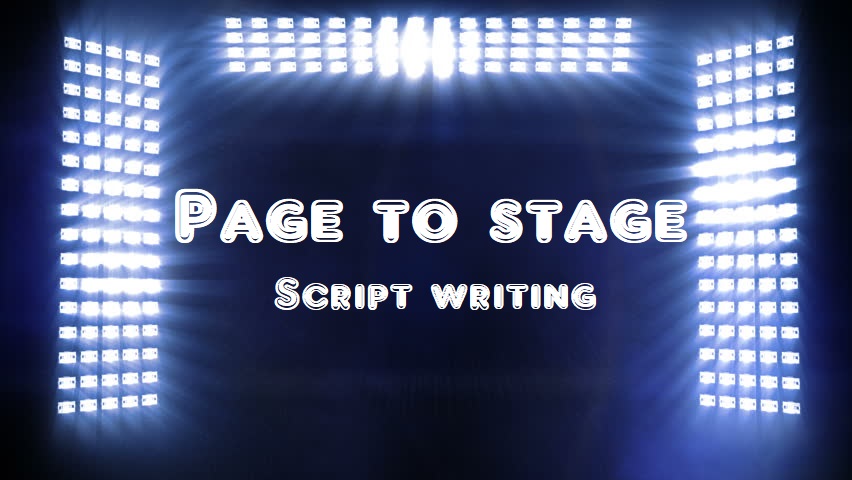Last month I touched on the need for a lean screenplay. Lean writing is ideal for most forms of writing, the goal is to “say more, by writing less.” Wordy writing often discourages others from reading our work.
Screenwriting is no different. A long screenplay often loses its impact the more time it takes to read. A thick manuscript also has other drawbacks, below are a few hiccups that are possible with a screenplay with little white space.
- Numerous typos
- Repetitions
- Telling and not showing
When agents or studios are interested in a screenplay or a writer, they don’t read the screenplays themselves; they have readers, who are the gatekeepers in Hollywood. They are the first set eyes to see your screenplay.
If the reader doesn’t like what they see, a studio or agent will never see your screenplay. This is why it is imperative for you to hook the reader sooner than later. The rule is to hook the reader by page 10, if you don’t do that, they will never finish reading your screenplay.
Cut to Finish!
Your screenplay needs to be a page-turner–meaning by the time a reader gets to page 10 they are invested to read the next 100 pages.
Reading a screenplay takes time, the more pages, the more time it takes to read it. This is why the clutter needs to go. Clutter in screenwriting comes in many forms: wordy dialogue, too much scene and character description, unnecessary technical terms, or camera angles.
Also, too many characters or scenes can lose a reader and make your narrative confusing. If a scene or character cannot move the plot forward, then it isn’t a vital part of the story. Your job is to tell a story, not direct it or paint a picture, that’s other creatives’ jobs. You are simply the storyteller.
Many new screenwriters try to show off their “knowledge” by including technical camera angles or artsy descriptions in their storytelling and end up only making their script harder to read. So, keeping your script as lean as possible will make it easier to read. Below are a few script trimming tricks from screenwriting insider Scott Myers:
- Lose the orphans: if you have a line of dialogue or action that is only 1 to 2 words, try condensing it or cutting it to save space.
- Minimize parentheticals: there are often one or two words to direct an actor, dialogue itself is self-explanatory, no need to waste space or be repetitive.
- Cut transitions: transitions imply a movement from one scene to and next, that is what seen headings are used for, transitions are only useful when there is a significant change of scenery or time. By cutting the transition you can save a line or two from your script each time. Besides artsy transitions can be a sign of amateurism.
- Use pseudo-slugs: shortened seen headings that take up fewer lines and space.[i]
There are many benefits to having a lean screenplay. Shorter screenplays are easier to read, the story flows smoothly and quickly from scene to scene and plot point to plot point. This saves a reader time and energy.
It gives a reader a more enjoyable experience. A quick read increases the chance of your screenplay making it past the gatekeepers in Hollywood and you’re one step closer to crossing the finish line.
Finish Line!
Don’t forget that every page of your screenplay equals about one minute of screen time in a movie. The longer a movie is the less likely you are to keep an audience’s attention until it’s finished.
No one wants to sit through a long movie unless it holds their attention from beginning to end. Your job is to make your audience commit to sticking around until the closing credits roll.
The best writers know how to pace a story to keep an audience interested longer, they know how to get more bang for their buck. Besides, not every scene in a screenplay makes it to the finished movie when it is released.
Even in major motion pictures scripted by Hollywood studios there are often deleted scenes included when a movie goes into home distribution. Below are a few deleted scenes from recent movies.
The studios and producers knew that they could save time and enhance the audience’s experience by removing the scenes from the finished product and that is why we must cut to finish!

Martin Johnson survived a severe car accident with a (T.B.I.) Traumatic brain injury which left him legally blind and partially paralyzed on the left side. He is an award-winning Christian screenwriter who has recently finished his first Christian nonfiction book. Martin has spent the last nine years volunteering as an ambassador and promoter for Promise Keepers ministries. While speaking to local men’s ministries he shares his testimony. He explains The Jesus Paradigm and how following Jesus changes what matters most in our lives. Martin lives in a Georgia and connects with readers at MartinThomasJonhson.com and on Twitter at mtjohnson51.




